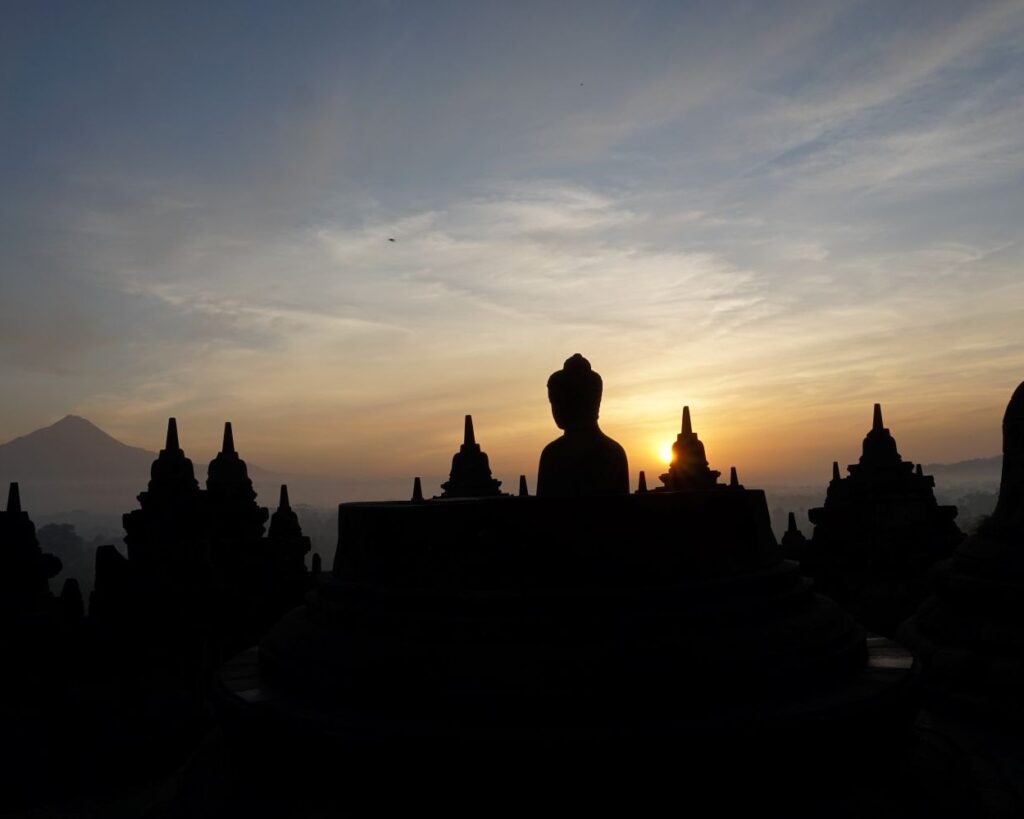The Dieng Plateau is a marshy plateau that forms the floor of a caldera complex on the Dieng Volcanic Complex in Wonosobo and Banjarnegara Regencies, Central Java Province, Indonesia. Referred to as “Dieng” by Indonesians, it sits at 2,000 metres (6,600 ft) above sea level, far from major population centres. The name “Dieng” comes from Dihyang which means “place of the ancestors or gods”.
Dihyang is a mountainous area, ancient Javanese believed that ancestors and gods resided in high places.
An inscription reveals that the ancient Javanese used the Dihyang area as a center for worship. Mentioned in the Gunung Wule inscription in 861 AD, someone was ordered to maintain a sacred building in an area called Dihyang. Local people generally call this area the popular name “land above the clouds”, because the area is surrounded by clouds or mist from the mountains.
The Plateau is the location of eight small Hindu temples from the Mataram Kingdom. It is unclear when they were built, estimated to range from mid 7th century to end of 8th century AD; they are the oldest known standing stone structures in Java. They are originally thought to have numbered 400 but only eight remain. The temples are now believed to have been named after the heroes of the Hindu epic Mahabharata.
Michell claims Dieng’s misty location is almost 2,093 m above sea level, its poisonous effusions, and sulphur-colored lakes make it a particularly auspicious place for religious tribute. The temples are small shrines built as monuments to the god-ancestors and dedicated to Shiva. The Hindu shrines are miniature cosmic mountains based on plans in Indian religious texts, although Schoppert suggests the design motifs have little connection to India.

“Tjandi Ardjoeno on the Dijeng Plateau” photo by Isidore van Kinsbergen
In 2011, in a review published by Romain, the temple is now believed to be related to Dravida and Pallava style temples of South India. The theory that poisonous effusions make it auspicious is now disputed as volcanic activity in this area from the 7th to 9th century is yet to be established, and records suggest the temple was abandoned after volcanic eruptions became common in central Java.
With an elevation of 2,060 m above sea level, Dieng has a distinct subtropical highland climate under the Köppen climate classification (Cwb). In its brief dry season, there is much less rainfall than in its lengthy monsoon periods (lasting from October to May). The average annual temperature in Dieng is 14.0 °C. About 2652 mm of precipitation falls annually.
Known for its chilly climate, temperatures may even drop to 2 degrees (along with wind chills down to -2º) in the peak of its dry season. Though infrequent, frosts have been recorded every year, particularly in the late evenings and mornings of July and August. This may last for one week on average. Though this regionally-rare weather phenomenon occasionally attracts tourists to cluster around the plateau area, it is also notorious for the destruction it often inflicts upon the local produce, with agricultural plants and crops such as potatoes being the most severely affected.
Locals usually call this frost “bun upas”. In the local Javanese dialect, “Bun” (or “embun”) means dew, while “upas” is poison. Although “bun upas” or frost in Dieng is actually not poisonous, this term “upas” was created by local people due to its devastating effect on agricultural plants, in which, the plants die quickly as if they were poisoned when the frost takes place. The following climate data is for the village of Sembungan, one of Java’s highest villages.
The plateau is the largest producer of potatoes in Indonesia, with the crop becoming more predominant since 1985. Before this, various other crops such as corn and tobacco were planted instead. Expansion of potato plantations had for a time resulted in significant environmental damage from erosion and deforestation, though recent developments have seen a degree of reforestation.


